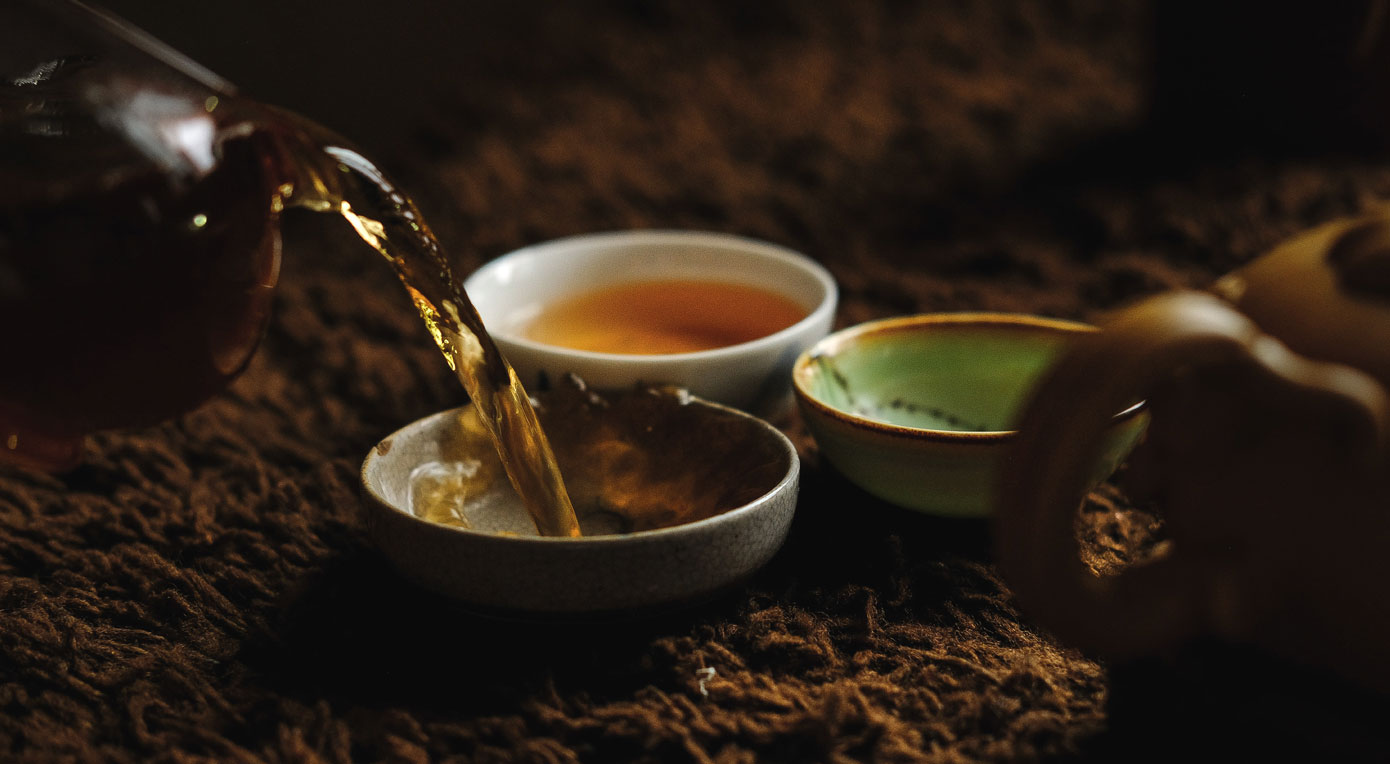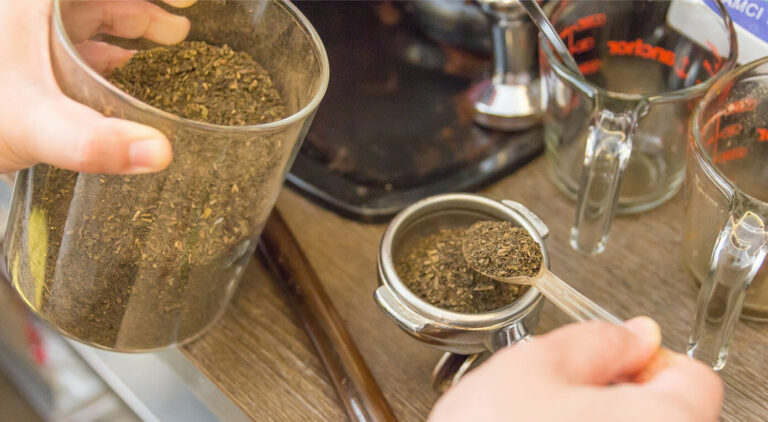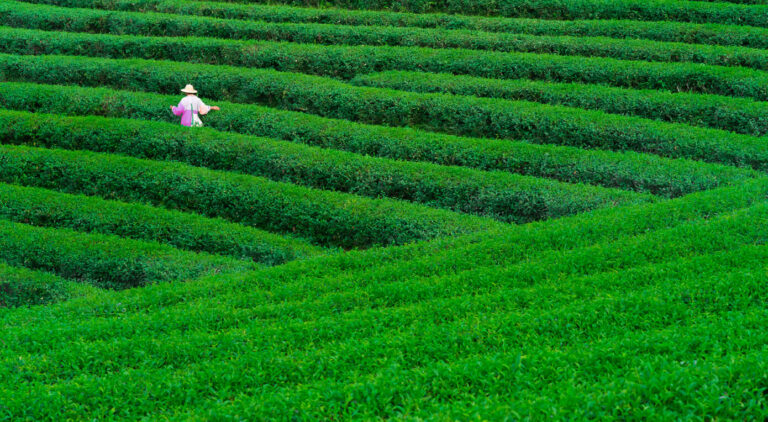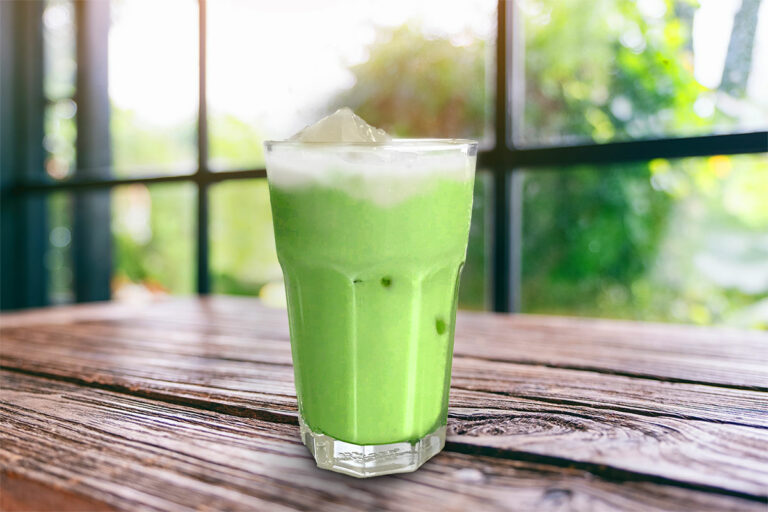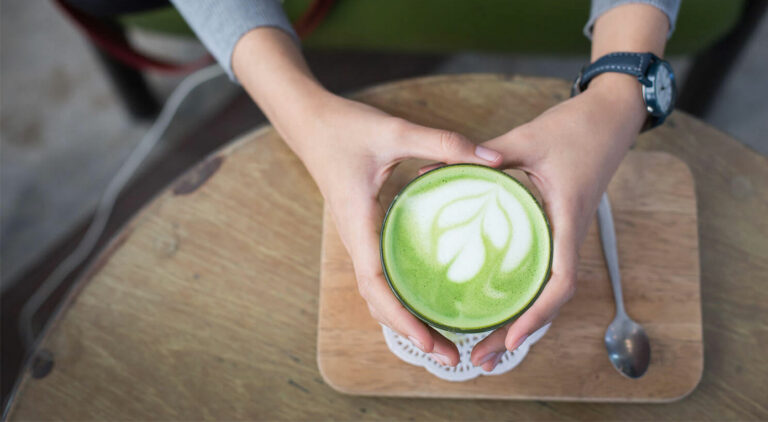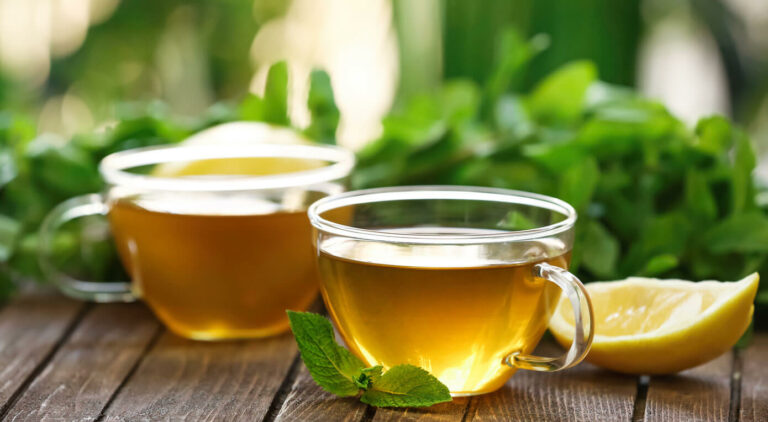Why is My Green Tea Brown: 5 Top Reasons You Should Know
Green tea is known for its delicate flavor profile and many health benefits. When you brew a cup of green tea, you expect to see a bright green or yellow-colored liquid in your mug. But what happens when you make your brew and the water is brown or of darker color? Why is your green tea brown?
It’s not an uncommon occurrence, but it can be confusing for many people. If you’re wondering why your tea is brown, either there’s nothing to worry about because that’s the natural color, or, something went wrong in the brewing process.
Basics of Green Tea Leaves
Green tea is a type of tea made from Camellia sinensis leaves that are allowed to wither and dry after they’re picked. The leaves of the Camellia Sinensis tea plant are also used to make different types of teas like white tea, oolong tea, and black tea. Due to different methods of cultivation, growing conditions, processing methods, and time of harvest, there are different types of green tea with different flavor profiles and different colors.
In other words, although green tea has the word “green”, it doesn’t mean green tea color has to be green. Green tea can be yellow, brown, or bright green.
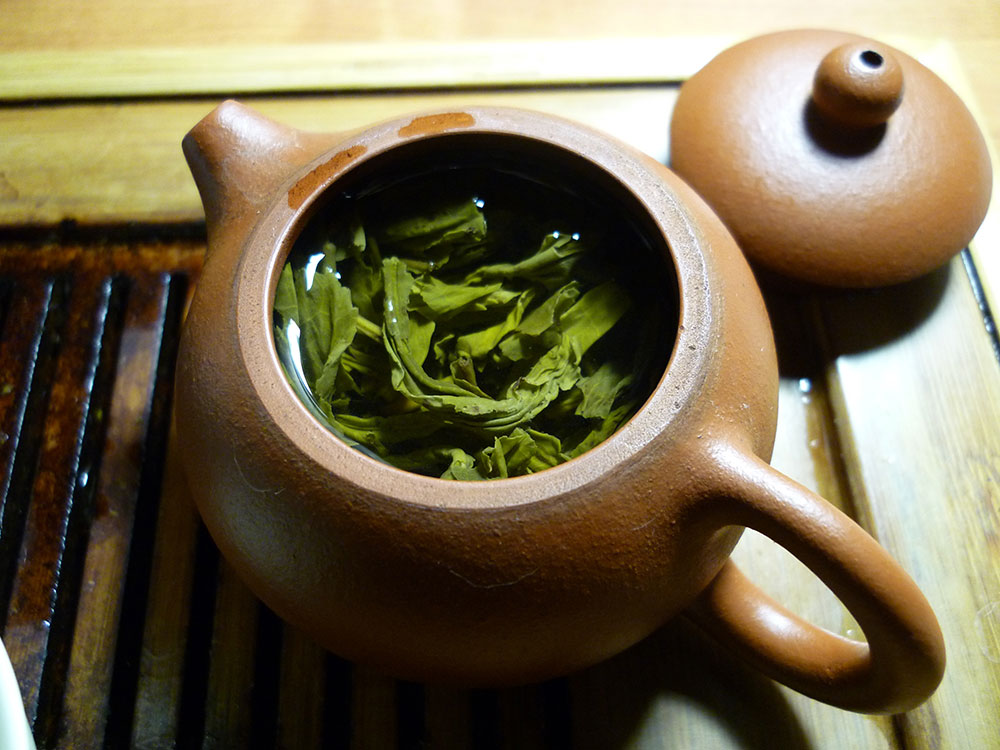
Have you ever wondered how tea leaves produce brown tea?
To understand what happens when tea leaves are dried, we first have to look at what kind of leaf they are and where they came from. Tea leaves come from trees called Camellia Sinensis, which grow in a variety of climates around the world. There are two main varieties: black and green. Black tea comes from fully grown Camellia Sinensis plants, while green tea comes from young plants that haven’t been harvested yet. Both varieties are picked by hand, and carefully plucked by farmers who have spent years perfecting their craft. These farmers use amazing tools like bamboo baskets and hooks made out of sticks to help them pluck each leaf from its stem without damaging any others nearby.
Once all the leaves have been harvested, they’re dried out in large metal drums (called woks) over open fires so they can be ground up into powder later on down the line.
When the leaves are dried, they turn brown. The process of them turning brown is due to the chemical reaction with heat and air. This is known as the oxidation process. The more oxidation the leaves undergo, the darker they get.
With varying oxidation duration of tea leaves and different cultivation methods, a variety of green teas are produced. The different colors of this variety of green tea are:
- Yellow color
- Vibrant green color
- Bright, transparent brown color
- Vivid green color
Why is My Green Tea Brown
1. Steeping Duration
The reason that brewed tea turns into brown color is due to the chemical called tannin. This compound has a brownish hue and it’s found in all kinds of plants, including those used to make tea leaves. The more tannin the leaf contains, the more likely it will turn brown when exposed to heat or hot water — which is exactly what happens when you brew green tea. What if you oversteep your tea? The longer you let your leaves steep, the stronger their flavor will become—and therefore, the darker they’ll appear when brewed.
2. Type of Green Tea
If you did not oversteep your tea, but your green tea doesn’t look as vibrant as usual; this doesn’t mean there’s anything wrong with your brew.
Besides steeping duration, the color of the tea after you’ve brewed the green tea leaves depends on the type of green tea you’re using. Different green teas give different colors and flavors. Is it Japanese green tea, or Chinese green tea? Is it green tea of good quality or low quality? How can you tell if the tea you are drinking is of high quality loose leaf tea or that of a lower grade? Some tea types turn brown after just a few minutes, while others stay green for up to six minutes. This can be due to the type of green tea you are brewing.
Hojicha
Hojicha is a type of roasted green tea that produces a light golden color or light to reddish-brown color when the tea leaves are steeped. This is not due to the quality of the tea leaves, but because of the manufacturing process.
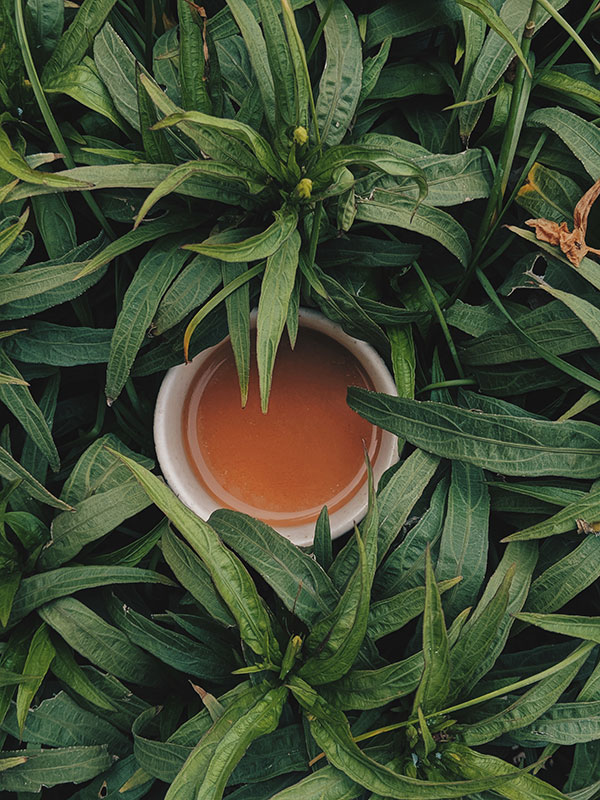
Hojicha is traditionally produced in Japan, where it has been consumed for centuries. The word hojicha means “roasted tea” in Japanese. The process of making hojicha starts with the selection of tea leaves. They must be picked at the right time and from the right place so that their quality is high. Then they are transported to factories where they are sorted and stored until they are ready for use.
The next manufacturing process for hojicha begins with roasting the leaves at high temperatures to bring out their natural oils and create an aroma that’s reminiscent of toasted nuts or popcorn.
The process begins with the harvest of the tea leaves. The leaves are then dried in the sun over bamboo mats, which helps to preserve their natural flavor.
After they’ve been dried, they’re roasted over charcoal at high temperatures until they turn brown and become brittle. Hojicha is naturally brown in color because it’s made from roasted leaves—and the longer the leaves are roasted, the darker they become.
The final step is to crush the roasted leaves into powder form. This makes it easier to brew when making hojicha tea or other drinks.
3. Water Temperature
If your green tea is turning brown quickly, it’s likely because your water is too hot. Water at higher temperatures (above 180 degrees Fahrenheit) will extract more tannins from the leaves or green tea bags and turn your tea brown faster than if it were brewed at lower temperatures. If this is happening with your tea, try to brew it with cooler water.
If your tea doesn’t get darker after six minutes of steeping time has passed, it might be because there isn’t enough caffeine in the leaves for them to extract fully into the water—it takes some caffeine molecules from within the leaf in order for them to turn into tannins, which are responsible for making a dark-colored brew. If this seems like what’s going on with your cup of tea, consider using more leaves or letting it steep longer before drinking.
4. Water Quality
Good quality water helps to brew your green tea the right way. A study by MDPI Journal reported that water hardness and softness can affect the oxidation of green tea which affects the color after brewing it.
Hard Water vs Soft Water
Whether your water is considered hard or soft is dependent on the amount of minerals, typically calcium and magnesium. Soft water has less of such minerals than hard water [1]https://www.webmd.com/diet/difference-between-hard-soft-water. The more minerals the water contains, the harder it is.
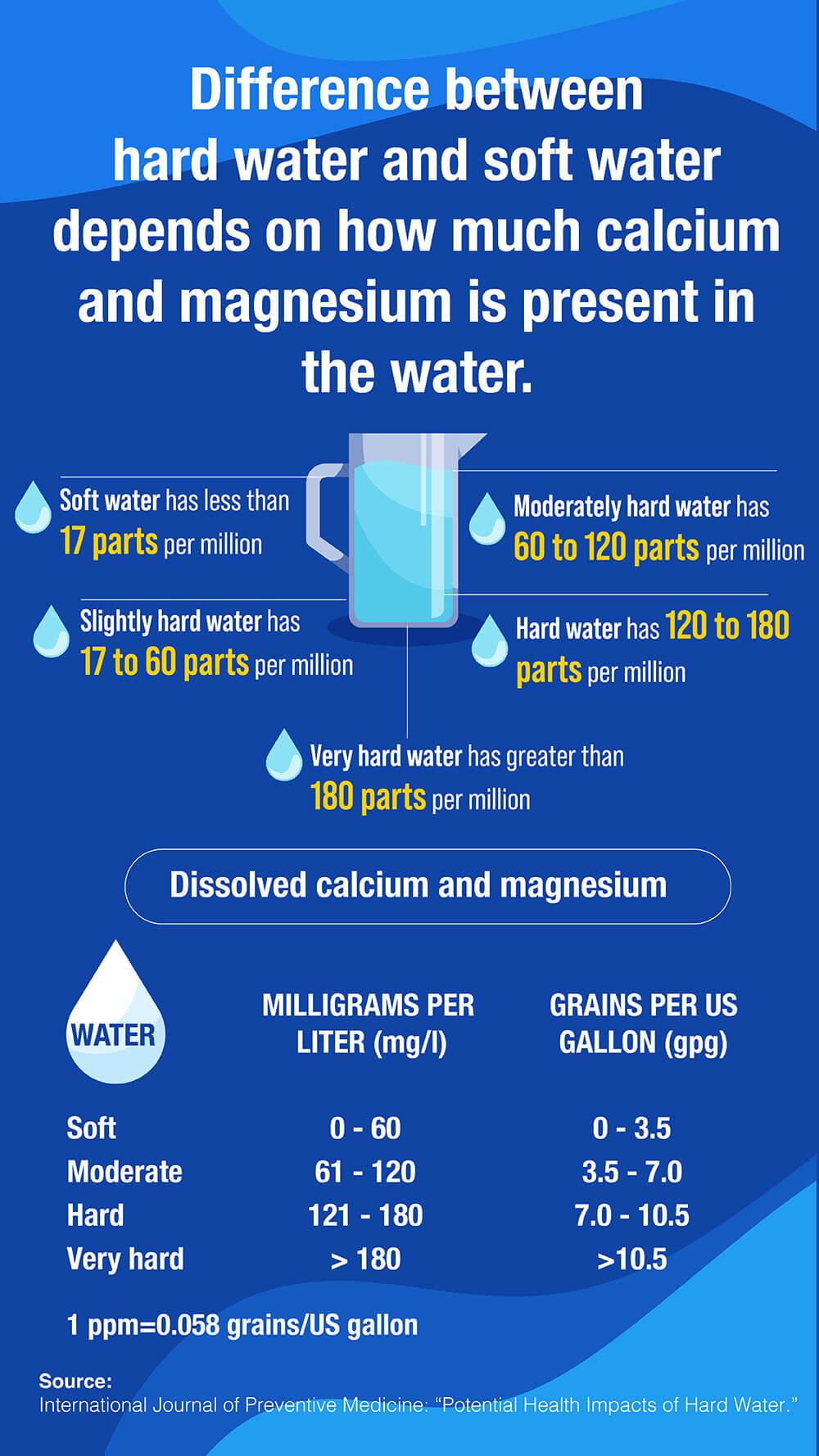
Tap Water
Some locations have tap water which is considered hard water. If you were to brew your green tea with the tap water that is harder than usual, you will see your green tea change in color from yellow-green to dark brown (or light brown for moderately hard water). Hence, if your tea turns brown when brewed at the right water temperature, it could be because the tap water you are using is very hard water.
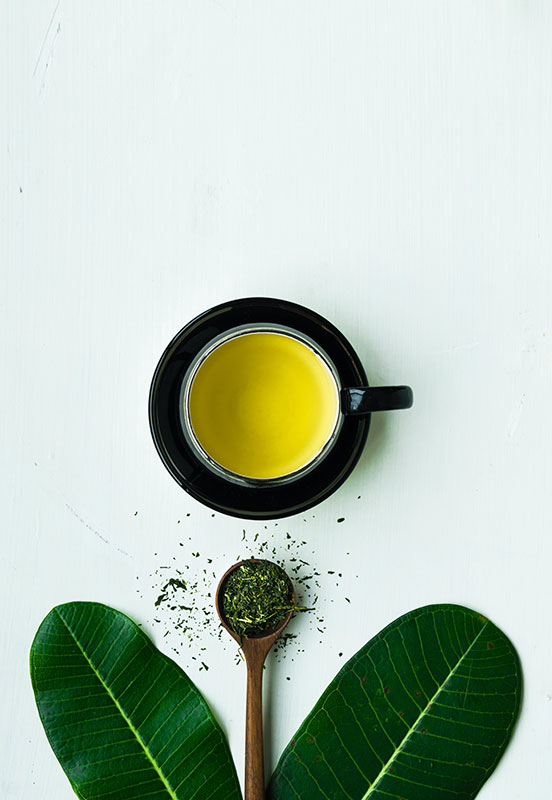
If your location provides tap water that is not very hard, you are able to brew teas that maintain their yellow-green color. However, you would want to use tap water that provides the right mineral balance because the chemical reaction between the minerals and tea compounds affects the tea flavor.
Based on a study by the Department of Chemistry and Biochemistry, California State University, very hard water would be unsuitable to brew green tea. This experiment was done with tea brands like Bigelow and Twinnings. It was reported that some local tap water can be too hard which makes the green tea brown and alters the flavor due to a chemical process or autoxidation of flavanols (catechins) [2]https://www.mdpi.com/1420-3049/26/12/3485/htm.
If you use tap water to make green tea that is not supposed to be brown but turned brown, it could be that the tap water you are using may have too much alkaline sodium bicarbonate. Boiling the water first to remove such compounds can help, but you will have to wait for the boiling water to cool down to 180 degrees Fahrenheit before brewing your green tea.
Otherwise, the other way is to use a water softener like an ion filter to treat your tap water. Or use spring water to ensure the necessary minerals exist but not too much to create a balanced chemical reaction with your green tea. This gives the right green tea color and taste.
Based on the book by Yukiaki Kuroda and Yukihiko Hara, so long your tap water is clear of odors and deficient in magnesium and calcium, tap water is recommended as the most suitable water for making tea [3]https://www.ncbi.nlm.nih.gov/pmc/articles/PMC6356489/.
5. Storage
A study was done by the Korean Journal of Food Science and Technology on green tea infusion. It was reported that storing your green tea in a place that is bright and warm (eg. direct sunlight) can expedite your green tea to turn brown more than if it’s stored in a cool, dark place.
Light does affect the color of green tea, but not as much as the environment’s temperature. If kept in a warm place with high heat, the tea catechins in green tea start to oxidize, which leads to a decrease in unoxidized catechins. This chemical reaction eventually increases the brown pigments in the green tea infusion [4]https://www.koreascience.or.kr/article/JAKO200931670170305.page.
How to Brew Good Green Tea
The quality of green tea you make depends on the type of tea you are brewing and your brewing process. Different types of green tea also require different brewing processes.
Here’s the easiest way to brew a cup of good-quality green tea.
Ingredients and Equipment:
- Teapot and teacup
- 3 teaspoons loose-leaf green tea
- Hot water but not boiling water
- Tea strainer
- Honey
Instructions:
Step 1: Preheat your teapot and teacups
Pour hot water into your teapot and teacups, then swirl them so that the hot water touches all sides. Then discard water.
Step 2: Prepare tea
Add three teaspoons of loose sencha green tea into a tea strainer.
Step 3: Prepare hot water for tea
Boil about 9 ounces or 250ml of water. Then let it cool to about 180 degrees Fahrenheit and pour it into the teapot. Do not use boiling water to preserve the green tea’s full flavor profile. Boiling water will burn the leaves causing the tea to have a bitter taste.
Step 4: Steep
Add the tea strainer of green tea leaves into the teapot. Cover the teapot to lock in the green tea flavors. Then leave your tea to steep for about 30 seconds to 3 minutes. The longer the brewing time, the more bitter it will become. Remove the strainer anytime after 30 seconds based on your flavor preferences.
Step 5: Add flavor
The sencha green tea already tastes great as it is. But you may wish to add a teaspoon of honey to sweeten and enhance the flavor or some lemon juice to make it slightly tangy.
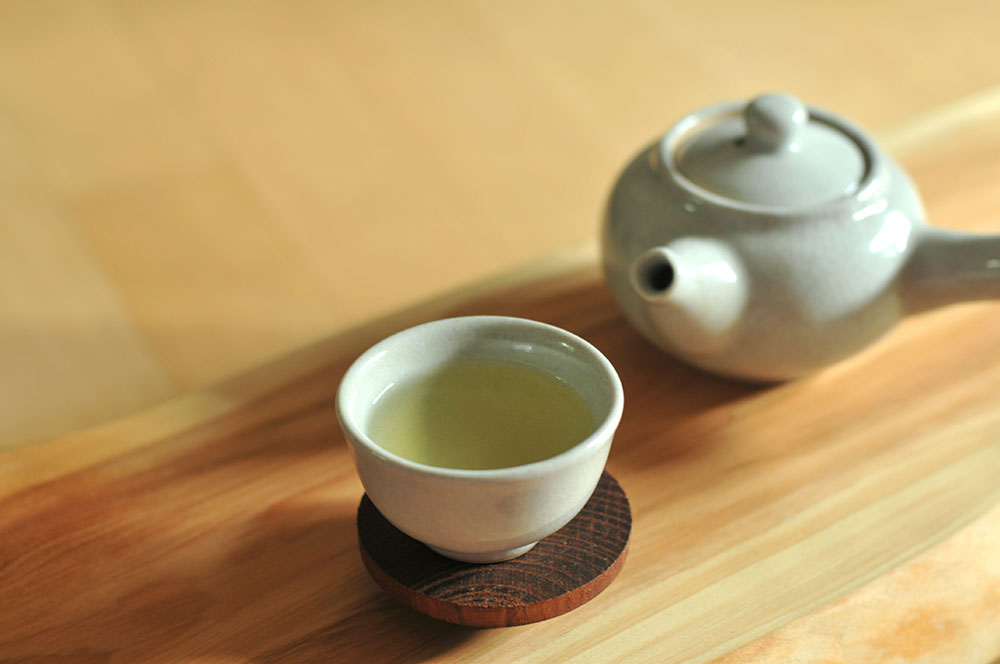
Verdict: Why is My Green Tea Brown
If you are brewing Hojicha green tea, it’s normal if you see the water turning brown. Otherwise, it shouldn’t be brown in color, and nor should it taste bitter. The next time you are brewing green tea and see it turning yellow-green to dark brown, chances are, it may be due to how it’s stored or the brewing process it’s been through. In other words, your green tea may have been exposed to too much heat and light, brewed with low-quality water, water that is too hot, or oversteeped in hot water.
